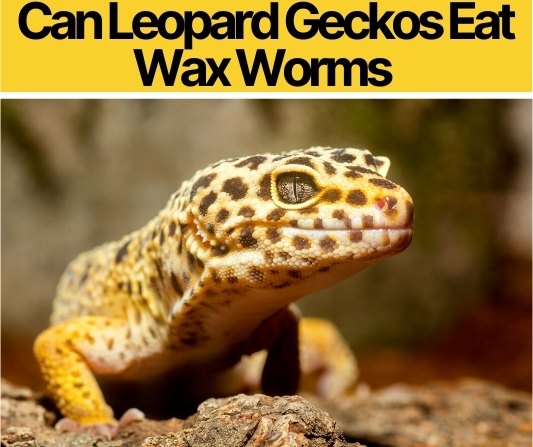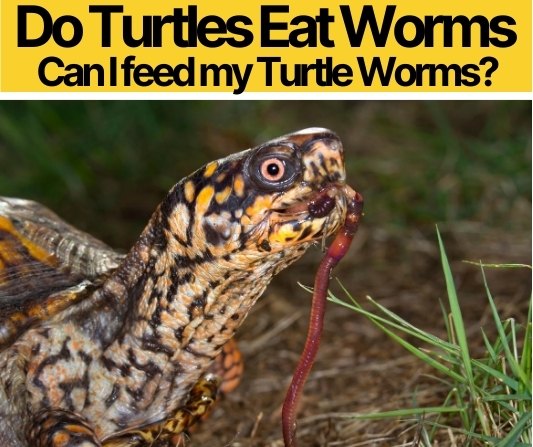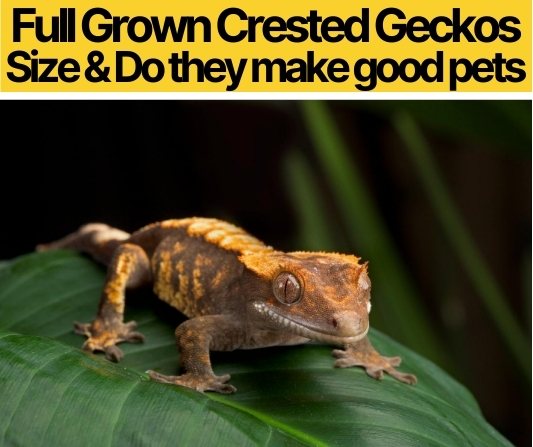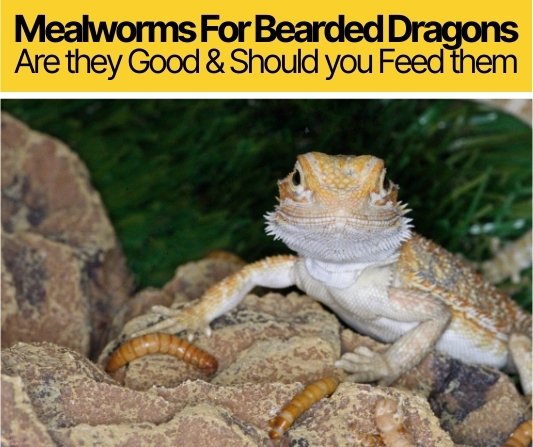 The first time I came across mealworms was when I went fishing as a kid. My Dad opened a small plastic tub and it was full of them. Much to my horror, my big cousin decided it would be funny to grab a handful and shove them down my back! Flashbacks are kicking in writing this!
The first time I came across mealworms was when I went fishing as a kid. My Dad opened a small plastic tub and it was full of them. Much to my horror, my big cousin decided it would be funny to grab a handful and shove them down my back! Flashbacks are kicking in writing this!
Mealworms for bearded dragons are a popular choice for pet owners. Not only do beardies love them, but they are also inexpensive to buy.
There is some debate though, whether mealworms for your bearded dragon is a good idea.
Can Bearded Dragons Eat Mealworms?
Yes, Bearded Dragons can eat mealworms, this is not to say they should though. If given, they should be as a treat and not a primary source of their food. Mealworms are high in fat and low in protein. They offer little nutritional value to the bearded dragon.
A bearded dragon needs time to digest the hard shell of the mealworm
Their diet should consist mainly of greens, meat, and other insects.
Live mealworms for bearded dragons is the best option. This is due to the mealworms containing a lot of moisture.
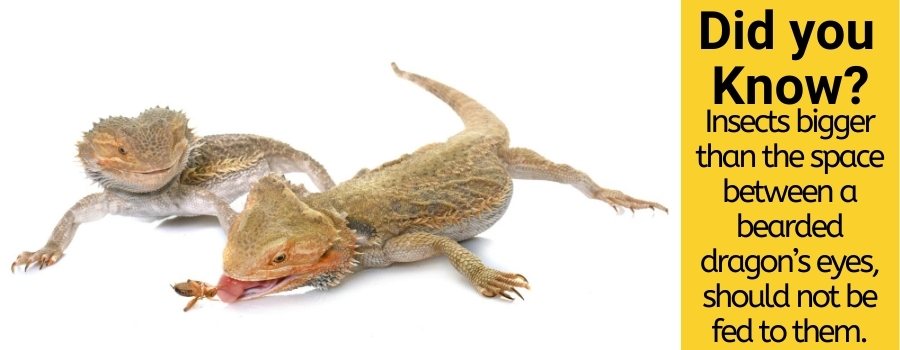
So, can bearded dragons eat dried mealworms too?
Yes they can eat dried mealworms as well, but live bait is a healthier option. The moving bait keeps their body and mind active.
Mealworms contain little calcium. So, when preparing mealworms for bearded dragons you should cover them in calcium powder. This is simply done by mixing the supplement in a bowl with the mealworms.
The bowl used should be such that they are unable to escape. Mealworms can’t climb.
Once finished, it is important to remove any left-over mealworms in the bowl. Bearded dragons should be fed fresh mealworms only.
Tip: Insects bigger than the space between a bearded dragon’s eyes, should not be fed to them.
Are Mealworms Good for Bearded Dragons?
In short, no. Mealworms are not a recommended source of food for your bearded dragon.
They should be treated like me with pizza. I would love to consume one every day, but of course, this would not be good for me. A pizza every few days or once per week is fine, similarly with mealworms for bearded dragons.
Mealworms are detrimental to a bearded dragons health if fed in abundance.
So, what are mealworms? Contrary to the name, mealworms are not worms. They are the larvae of beetles. There are 3 different types of mealworms.
Types of Mealworms for Bearded Dragons
Regular Mealworms
The most popular of the 3. They are used by pet owners, fisherman etc.
They grow to approximately 2.5cm in length.
A hard exoskeleton, to protect themselves against predators.
Super Mealworms
Regular mealworms which have been modified with hormones. This prevents them from entering the beetle stage.
They grow to around ½” bigger than regular mealworms. Although bigger than Regular, they have a thinner exoskeleton. This makes them a great choice of a mealworm for your bearded dragon as they are easier to consume. Due to their size, they should only be fed to adult beardies.
Be careful when picking them up, as they have quite a bite! They tend to bite the bearded dragon also if they hold them in their mouth rather than chew them quickly.
A popular myth is that they will eat through the stomach of a bearded dragon, if not chewed before swallowing. This is complete nonsense.
They have been known to bite the bearded dragon though, if left in the tank with them.
Super mealworms are difficult to breed. This is due to their cannibalistic nature. When other mealworms begin morphing in a beetle, they should be separated.
The super mealworms will usually eat them if no other food is available. Unlike regular mealworms, they can’t be kept in a fridge or they will die.
| COMPOSITION | REGULAR % | SUPER % |
| Moisture | 63 | 59 |
| Ash | 19 | 1 |
| Protein | 1 | 19 |
| Fat | 14 | 15 |
| Carbohydrate | 3 | 6 |
Beetle
This is the final stage of their life cycle.
The mealworms morphs into white larvae before becoming a beetle. They generally last up to 3 months before breeding.
At this stage, the beetle would be a more healthier option than the regular mealworm as a meal.
Habitat
The difference in habitat between the two, means that mealworms for bearded dragons are not a natural source of food.
Bearded Dragons originated from the deserts of Australia. They are also found in several different environments across the country including scrublands, woodlands and along the shores. The OZ’s refer to them as ‘Beardies’.
The strong jawed omnivores have a diverse diet in the wild. This includes lizards, beetles, fruit, and leaves.
Mealworms are thought to originate from the Mediterranean but are now found all over the world. This is due to humans colonizing new area of the World and trade.
The larvae are generally found in dark, moist places i.e. under rocks, dead trees, and animal dens. They much prefer human environments though. The scavengers can find an abundant of food in places like shops, warehouses, and farms.
A bag of wheat for example, is an ideal food source and habitat for them to live. A female mealworm lays approximately 500 eggs. So, they are a devastating pest for people who find them in their property.
- The oldest known mealworms to be found were in what is now Turkey
Captivity
Bearded Dragons are kept as pets across the World. Even though Australia banned their export in the 1960’s. The United States has an abundant number in captivity.
Breeding in captivity between different species of bearded dragons has resulted in ‘‘morphs’’. These are a colour not found in the wild.
Mealworms are a popular choice for pet food because they are inexpensive and easily bred. All you need to do is put some dry leaves, stones or sticks in a plastic box. Make sure the box has some air holes. Their diet should consist of oats and apples.
Mealworms are also readily available to buy in most shops and even online. This is ideal for pet owners who can buy the mealworms for bearded dragons and other pets.
Captivity is where mealworms became part of bearded dragons normal diet.
Can Baby Bearded Dragons Eat Mealworms?
Mealworms should not be fed to baby bearded dragons. The high fat and low protein of the mealworms is not good for the growth of a bearded dragon.
When a juvenile bearded dragon reaches 6 months old, a couple of mealworms per week is fine. They should be small in size and young. This is due to the freshly hatched ones having a softer exoskeleton. This will reduce the risk of impaction for the bearded dragon.
During their first year they will generally refuse to eat greens. They will prefer to eat an abundance of insects. The best option is phoenix worms which are highly nutritious, low in fat, and high in protein.
You should feed your bearded dragon insects everyday in the first year. How many? As many as they can eat! They can eat up to 200 crickets per day.
This should be done 3 times per day for the 8 months of a bearded dragon’s life. You should then switch to twice per day. Each mealtime should last around 15 minutes and let them eat as much as they want.
Tip: The bright light and UV light should be on for approximately 2 hours before the first feeding time. In turn, this should also be done after the last feeding time. This process helps the bearded dragon’s body digest its meal.
Are Mealworms Bad for Bearded Dragons?
Mealworms are the second most popular food for bearded dragons. They should only be fed on occasion though due to several reasons.
- The hard, chitin shell of the mealworm can cause blockage and indigestion. The bearded dragon’s digestive system needs a few days to break down the exoskeleton.
- In extreme circumstances, the chitin can press against the spinal cord. This can result in paralysis or death. Although rare, this is more likely to happen in a younger bearded dragon.
- Beardies can become addicted to mealworms, much like humans with sugar. They love mealworms so much they will refuse to eat anything else offered. The only option is to let them go ‘cold turkey’ and go without food. They should eventually begin to eat again after a couple of days.
- Mealworms can also cause Obesity in bearded dragons. This is due to their high fat content. They contain 13% fat, compared to 6% in cricket.
- High in phosphorous. Mealworms have a ratio of 1-3 or 1-4 ratio of calcium to phosphorous. Other insects generally only have a ratio of 1-2.
How Many Mealworms Should I Feed My Bearded Dragon?
Mealworms should be considered a treat.Too many mealworms will cause impaction, so it is important to keep the number generally low. The bearded dragon digestive system needs a few days to dissolve the hard shell of the mealworm.
So, how many mealworms to feed a bearded dragon? Around 12 every few days should be fine for an adult. If feeding super mealworms, the number should be around 3.
Super mealworms must be kept to a minimum as they can cause the bearded dragon to become malnourished. Obesity is also a concern.
Super mealworms are so tasty to a bearded dragon, it may refuse to eat any of its usual healthy food.
Tip: Always wash your hands before and after touching your bearded dragon. They can carry diseases and bacteria dangerous to us
Can Bearded Dragons Eat Mealworm Beetles?
The beetle would be a much better option for the bearded dragon than the mealworm. They have a softer exoskeleton and are high in protein and low in fat. The opposite of the mealworm.
Ironically though, bearded dragons tend not to like their taste.
Mealworms for Humans?
Eating mealworms in some parts of the world is the norm. For humans, they are a great source of protein and can be a substitute for beef.
The environmental impact of eating beef can be reduced by switching to mealworms. It’s estimated that 1 pound of beef needs 1000 times more water than the same weight of mealworms.
Although disgusting to the average Westerner, it’s completely normal to consume mealworms in places like Asia.
Tip: When buying a bearded dragon, pick one that is moving around a lot and alert. This indicates they are healthy. Avoid buying the smallest or the ‘runt’ of the litter as they will be prone to health issues later in life.
What Should Bearded Dragons Eat?
Bearded dragons are omnivores, so should be fed a mix of plant and animal- based food. In their natural habitat food can be scarce, so their diet will be pretty much what they can find, within reason of course.
A general rule of thumb to follow when feeding your bearded dragon is the 50/50 rule. Their diet should be split evenly with both a mix of plant based and animal-based food. Although younger beardies tend to prefer the latter (carnivores) and older seem to prefer the plant-based side (herbivores).
When feeding plant material, vegetables and flowers should make up most of the meal. Fruit is fine too but should only be around 20%. This is due to the low minerals they contain.
You can feed your bearded dragon raw or cooked vegetables. Raw is the best option though, as this is more natural, and the vegetables contain more nutrients.
Mealworms for Bearded Dragons
In conclusion, mealworms for bearded dragons are not a necessary part of the diet. The cons much outweigh the pros. Ranging from obesity, addiction and even death!
There are much more healthier options available.
If you decide to feed them, make sure it’s more as a treat rather than as a primary food source. This should be only every few days allowing them to digest the mealworms properly.
Even with feeding mealworms, the general rule is that it only should make up 5% of their diet. So, just cutting them out and replacing them with something else is easily enough done.
Related Questions:
Where do bearded dragons get their name? Due to them puffing out their necks when they are either scared or excited. Australians refer to them as ‘beardies’.
How long do bearded dragons live? They generally live 4-10 years. Provided you are not feeding them too many mealworms of course!
Do bearded dragons change colour? Yes. They will turn black to heat up. When they wish to cool down, you will notice their texture becoming much lighter.
Can a bearded dragon kill you? Although its bite is poisonous, the venom is not strong enough to kill a human. The small wound can become infected though, if not cleaned.
How to tell the difference between a male and female bearded dragon? Males have bigger heads and are generally bigger overall. A female’s tail is smaller than a male’s and slenderer.
Do snakes eat bearded dragons? Yes, they are natural prey for a number of snake species.

